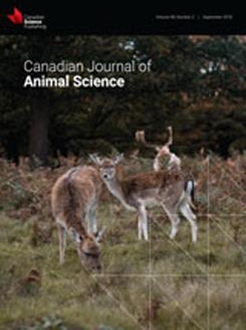G. Kannan, R. Gosukonda, A.K. Mahapatra
Canadian Journal of Animal Science 100 (1), 102-110, (19 September 2019) https://doi.org/10.1139/cjas-2019-0028
KEYWORDS: artificial neural networks, goat, modeling, regression, transportation stress
This study was conducted to determine if artificial neural networks (ANN) can be used to more accurately predict physiological stress responses in goats compared with statistical regression. Prediction models were developed for plasma cortisol and glucose concentrations, creatine kinase (CK) activity, neutrophil (N) and lymphocyte (L) counts, and N:L ratio as a function of time (0, 1, 2, 3, and 4 h; n = 16 goats per time) after a 2.5 h transportation (input 1) and stocking density (25 vs. 50 goats; input 2). However, input 2 was not included in the final models because density did not have a significant effect. The NeuralWorks Predict® software and SAS were used to develop ANN and regression models, respectively. Backpropagation (BP) and Kalman filter (KF) learning rules were used to develop nonparametric models. Correlations between predicted and observed values were better with ANN-BP (R values = 0.87, 0.67, 0.56, 0.27, 0.42, and 0.53) and ANN-KF (R values = 0.84, 0.67, 0.58, 0.27, 0.42, and 0.50) models for cortisol, glucose, CK, N, L, and N:L ratio, respectively, than with regression models (R values =0.85, 0.52, 0.27, 0.13, 0.31, and 0.12). The results showed that the ANN models can predict responses more robustly compared with statistical regression.


